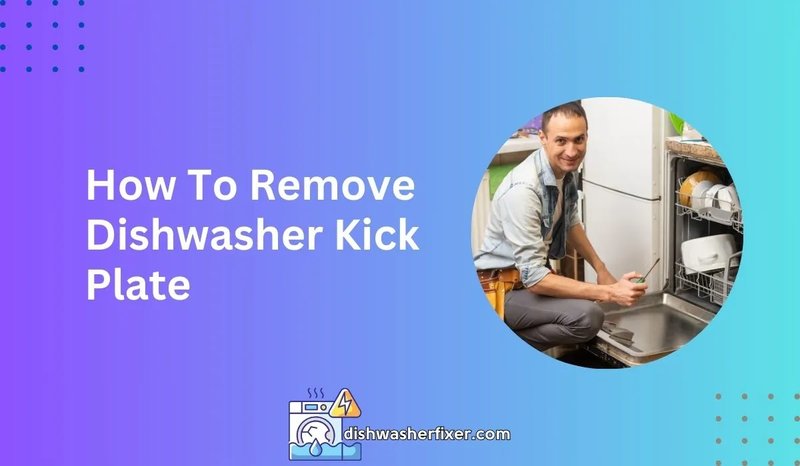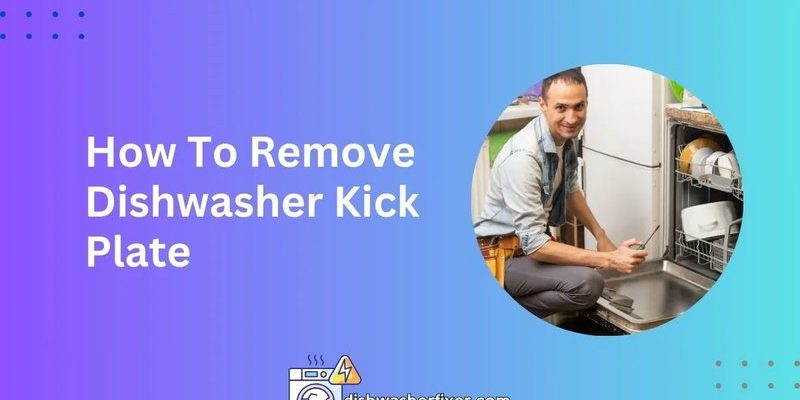
Here’s the thing: most kick plates are held on by a mix of screws, clips, and sometimes a bit of sticky grime that’s built up over years. If you’ve got a stuck kick plate (whether it’s on a Whirlpool dishwasher, a Samsung fridge, or any other brand), the right combination of tools and patience will get the job done with no drama—and no scratched-up appliance. Let’s walk through what you’ll actually need, what each tool does, and how to use them without making things worse. Trust me, once you’ve got the right lineup, the job gets a whole lot easier.
Why Kick Plates Get Stuck in the First Place
Honestly, kick plates are simple parts, but a bunch of small things can make them tough to remove. For starters, they sit close to the floor, so they pick up all sorts of debris—think dust, pet hair, and spilled drinks. Over time, this gunk can harden or work its way into screw holes and snap-in tabs, making everything hold together like glue.
Then there’s the issue of moisture. If you’ve got a dishwasher, the area behind the kick plate can get damp. This causes metal screws to rust or plastic clips to get brittle. On some models, brands like GE or LG use a combination of plastic tabs and Phillips-head screws—so if you don’t know what’s holding it on, you risk snapping off a tab or stripping a screw head just by guessing.
You might be wondering, “Can’t I just pry it?” That’s tempting, but using brute force is the main reason kick plates get damaged. Underneath, you might find electrical wires (especially on newer models with touch code panels or battery compartments in fridges), so being careful isn’t just about looks—it’s also about safety.
Flathead Screwdriver: Your Kick Plate MVP
Let me explain why the humble flathead screwdriver deserves a spot at the very top of your tool list. Most kick plates have slotted screws or tiny notches along their edges. A flathead’s wide, flat blade lets you gently pop these out without digging into the finish or bending the surrounding plastic.
How to Use It:
- Start by sliding the blade into any visible slots at either side of the kick plate.
- Apply gentle, upward pressure—don’t twist hard! If it feels stuck, try moving the screwdriver along the edge and working your way around.
- If you spot a seam, insert the blade and slowly “walk” it down the length of the seam, lifting just a little at a time.
Here’s a tip: wrap the end of your screwdriver with a bit of masking tape to avoid scratching painted or stainless steel surfaces. On some KitchenAid or Frigidaire models, the kick plate slots are painted, and a bare screwdriver can gouge them up in seconds.
Phillips-Head Screwdriver: The Unsung Hero
It might look like just another screwdriver, but the Phillips-head is often the tool that actually “unlocks” the kick plate. Most modern appliances (think Whirlpool, Maytag, Samsung) use Phillips-head screws to keep kick plates securely in place. If you skip this step and try to pry, you’ll end up fighting against hidden fasteners—which never ends well.
Steps for Safe Removal:
- Shine a flashlight under or around the kick plate to spot any screws holding it on.
- Choose a driver with a tip that matches the screw’s size exactly. Too big, and you’ll strip the screw; too small, and it’ll slip.
- Turn counterclockwise with steady pressure. If a screw doesn’t budge, try tapping it very gently with the handle to break up any rust or debris.
Ever tried removing a stuck remote battery cover and ended up mashing the plastic? It’s the same principle here—using a tool that fits perfectly keeps everything in good shape. Honestly, taking this one extra minute is the difference between a quick fix and a trip to the hardware store.
Plastic Pry Tools: Gentle Power for Delicate Jobs
Metal tools are great, but sometimes you need something less aggressive—especially if your kick plate snaps into place with tabs, which is common on Bosch or LG dishwashers. That’s where plastic pry tools come in. Think of these like the little blue tools phone repair shops use to open screens without scratching glass.
Best Way to Use Plastic Pry Tools:
- Slide the flat end under the edge of the kick plate where you see a gap.
- Gently twist or lever the tool to loosen the clip. Listen for a faint click—it means the tab has released, not broken.
- If one tab is stubborn, move along the plate and try another. Don’t force it.
These tools are cheap, often sold in multi-packs, and they last forever. If you work on electronics or need to code or reset appliance panels, you’ll use them for way more than just kick plates. Trust me, if you’re doing any gentle troubleshooting, these are worth keeping in your toolbox.
Needle-Nose Pliers: For When Screws or Clips Won’t Budge
Sometimes, you’ll run into a screw that’s rusted in place, or a plastic tab that just won’t pop out. That’s when needle-nose pliers earn their keep. They let you grip small screw heads or tabs and twist with more control than your fingers could ever manage.
Best Practices with Needle-Nose Pliers:
- Use them only for stubborn or stripped screws, or when a tab breaks and you need to remove the remaining piece.
- Squeeze gently to avoid crushing fragile plastic parts. A light twist is usually all it takes.
- If a screw is stuck due to rust, you can pair the pliers with a tiny drop of oil to help loosen it up.
A quick story: I once spent twenty minutes wrestling with a stuck kick plate on a friend’s old Maytag. It turned out a single rusted screw was the culprit. Needle-nose pliers loosened it in seconds, and I was able to finish the job without cracking a single clip.
Flashlight or Work Light: Don’t Skip This Step
You might be tempted to skip lighting if you’re working in a sunny kitchen, but trust me—those shadowy spaces under appliances hide surprises. Using a flashlight or work light lets you actually see every screw, seam, or stubborn bit of debris.
Why Lighting Matters:
- Helps you spot hidden screws, cable runs, or even the odd loose wire (especially on code-enabled or battery-powered panels).
- Lets you check for grime or sticky spots that might be holding the kick plate in place.
- Prevents accidental damage from working blind—nothing like finding out you gouged a wire because you couldn’t see it.
If you don’t have a headlamp or small work light, a phone flashlight works in a pinch—but a tool designed for the job will always make the process easier (and save your phone battery for when you actually need to troubleshoot an appliance code).
Soft Cloths and Cleaning Solutions: The Secret Weapon
You might be wondering why anyone would bother with a cleaning step before removing a stuck kick plate. Here’s the reality: a quick wipe-down can break up enough grime or caked-on gunk to make removal way easier. Plus, when you put the kick plate back, it won’t drag in new mess.
Quick Cleaning Steps:
- Dampen a soft cloth with mild cleaning spray or a bit of warm, soapy water.
- Wipe along the seams and edges of the kick plate—especially where the plate meets the floor or cabinet.
- Go slow! On some brands, like Bosch, the kick plate paint can scratch easily, so always use a soft touch.
If the kick plate still feels stuck after cleaning, let it dry and try again with your flathead or pry tool. Sometimes, a little clean-up is all it takes to unlock a stubborn part—and it sets you up for a smooth reinstall when you’re done.
When to Call It: Alternatives and Safety Tips
Honestly, if you’ve tried all these tools and the kick plate *still* won’t budge, it might be time to step back. Forcing things can crack plastic, strip screws, or even damage wiring—especially if you’re working with a new appliance with sensitive code panels or wireless remotes connected behind the scenes.
What to Do If You’re Stuck:
- Double-check the owner’s manual (search online for your model number) to see if there’s a hidden latch or code-reset step.
- If you spot wires or hear rattling, stop and avoid further prying—electrical components are easy to damage.
- Consider calling a professional, especially for new Whirlpool, Samsung, or LG appliances with techy features. Often, a pro can pop the kick plate with the right tool in seconds, and you’ll avoid expensive mistakes.
Sometimes, just taking a break and reassessing will let you spot a trick you missed the first time. You don’t want to turn a simple cleaning or troubleshooting session into a bigger repair job, so if you’re unsure, err on the side of caution.
Recap: Building Your Kick Plate Kit
Here’s what I tell friends who run into a stuck kick plate: gather your tools first—don’t improvise in the heat of the moment. You’ll want:
- Flathead screwdriver for gentle prying and slot removal
- Phillips-head screwdriver for handling most screws
- Plastic pry tools to avoid scratching or snapping tabs
- Needle-nose pliers for stubborn screws or stuck clips
- Good lighting (flashlight, work light, or headlamp)
- Soft cloths and mild cleaner for prepping and finishing up
Each tool has its own job, and skipping one makes things harder than they need to be. The best part? Once you get the kick plate off gently, reinstalling it is usually a breeze.
If you treat it like a delicate puzzle instead of a wrestling match, you’ll avoid damage and get back to why you were troubleshooting in the first place—whether that’s cleaning, syncing, or resetting something behind your kick plate.
Take your time, use the right tools, and don’t be afraid to ask for help if you need it. Appliances are expensive, but with a careful approach, you’ll keep yours running—and looking—great for years to come.
